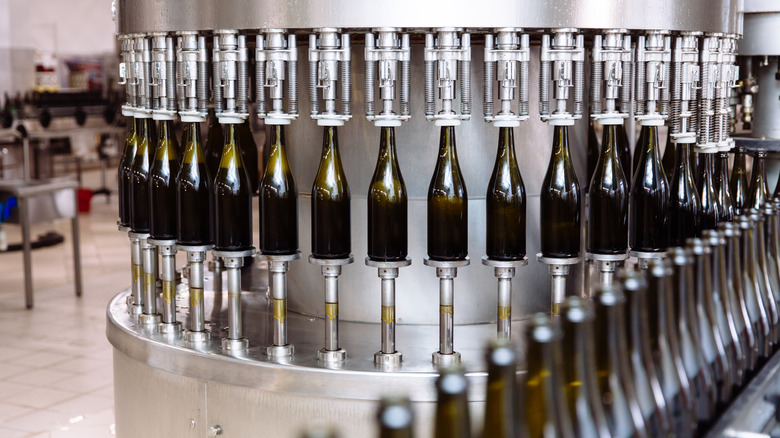What's The Difference Between Cava And Prosecco?
Like many people, when I turned 21 (ages ago), I couldn't wait to try all the fruity, colorful, cheekily-named drinks which all my older college friends were ordering before me. As I got older, I discovered I really didn't like many of the more vivid or flamboyant drinks, but I truly loved sparkling wine. All these years later (and even though I don't get carded anymore, boo-hoo), holding a long-stemmed glass of bubbly instantly makes me feel elegant, even on my worst hair day. But what's in my glass is almost never actual Champagne, even if it looks identical to it.
My glass is typically filled with prosecco or cava, two effervescent, sunny-colored wines that walk and talk like French Champagne but which are much friendlier to my budget. You can find excellent versions of each at approachable price points. Despite their similarities, the two types of wine are quite different; from the grapes they're made with to where they're from and how they get their sparkle. Prosecco is inherently Italian and a key ingredient in the darling summer beverage, Aperol Spritz. Cava, on the other hand, comes from Spain and is used to create the thirst-quenching Aigua de Valencia. Like Champagne, prosecco and cava can legally only be labeled as such if they're made in specifically designated regions in their respective countries.
Italian prosecco is a well-loved sparkling
Prosecco is produced in Italy's Veneto region, located in the northeastern section of the country. The area encompasses Venice, Padua, and Verona and stretches all the way up to the Austrian border. Technically, the neighboring region of Friuli-Venezia Giulia can also make prosecco, so long as the wine is made primarily from a grape called Glera. Sometimes a small percentage of other grapes are blended in.
Like all sparkling wines, prosecco undergoes secondary fermentation, a process which gives the wine it's bubbles. Essentially, once primary fermentation is done (when grape juice is transformed into wine), the liquid is put into steel tanks with yeast and sugar, which produces carbon dioxide gas which we experience as bubbles. The fizzy wine is then filtered and bottled. Prosecco isn't required to undergo aging before it's sold.
There are many different and wonderful brands of prosecco on the market. While they all have their own textures and flavors, the wine is generally light and fruity; making it excellent for anyone who likes a bright, easy-drinking wine.
Spanish Cava
Cava is primarily made in the Catalonian wine region, Penedès, but other areas which are authorized to label their cava as such are Aragón, Euskadi, Extremadura, La Rioja, Navarra, and València. In terms of grapes, cava must be made from Macabeu, Parellada, Xarello, Chardonnay, or Pinot grapes.
Cava is treated in much the same way that champagne is in that secondary fermentation takes place once the wine is bottled. Unlike prosecco, cava isn't placed in steel tanks. Once the initial fermentation is complete, cava is bottled right away. Left behind in the bottle is something called lees (aka dead yeast cells). Lees impart a unique flavor to cava which is sometimes described as savory or bread-like.
Cava is required to be aged (lees and all) for at least nine months, a fact which gives cava its signature minerality and a creamier mouth-feel. This in-bottle secondary fermentation produces more bubbles which last longer when poured into a glass. Both prosecco and cava are excellent alternatives to the pricier Champagne, making them perfect for any celebration, everyday sipping, or even making sparkling Jell-O.


